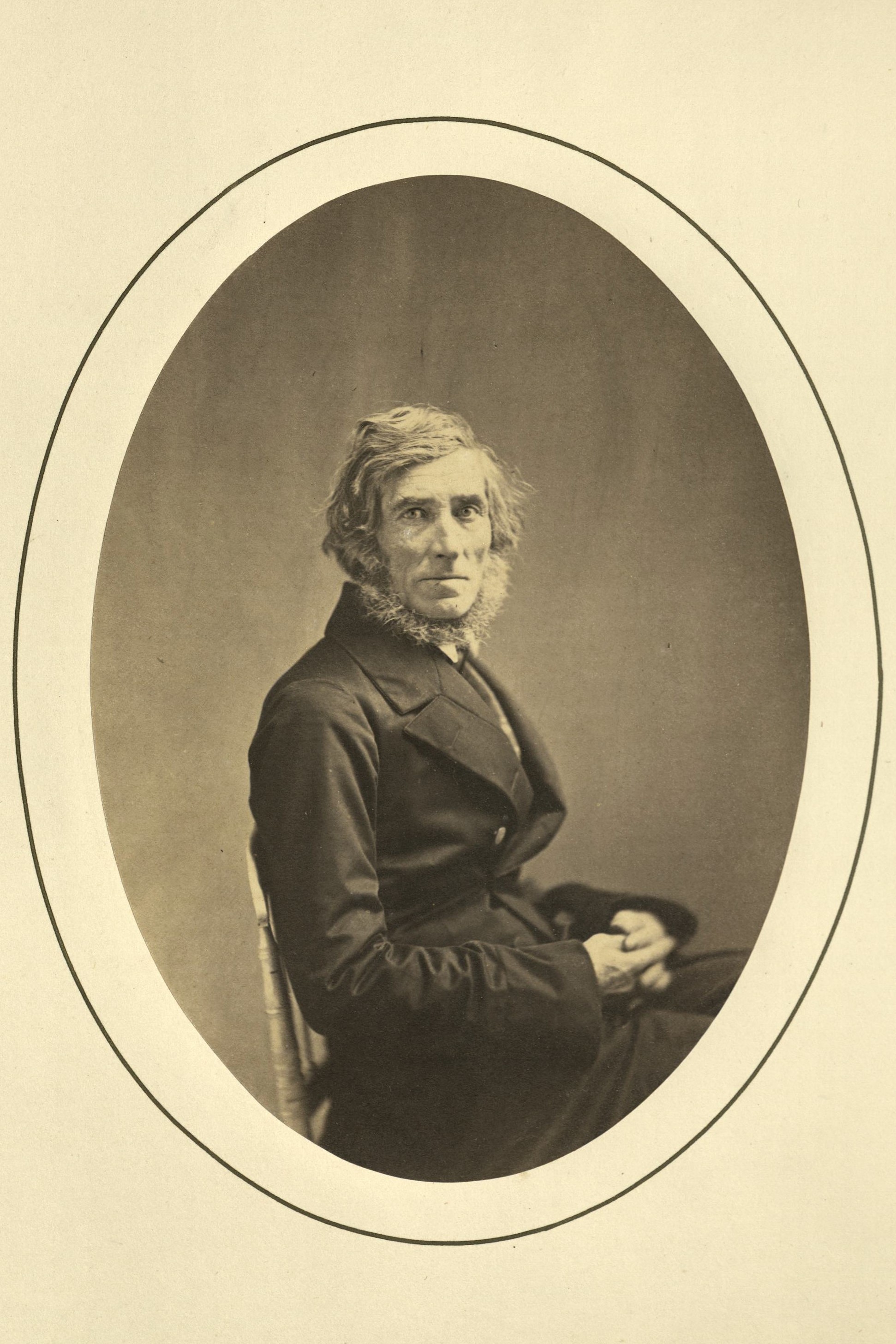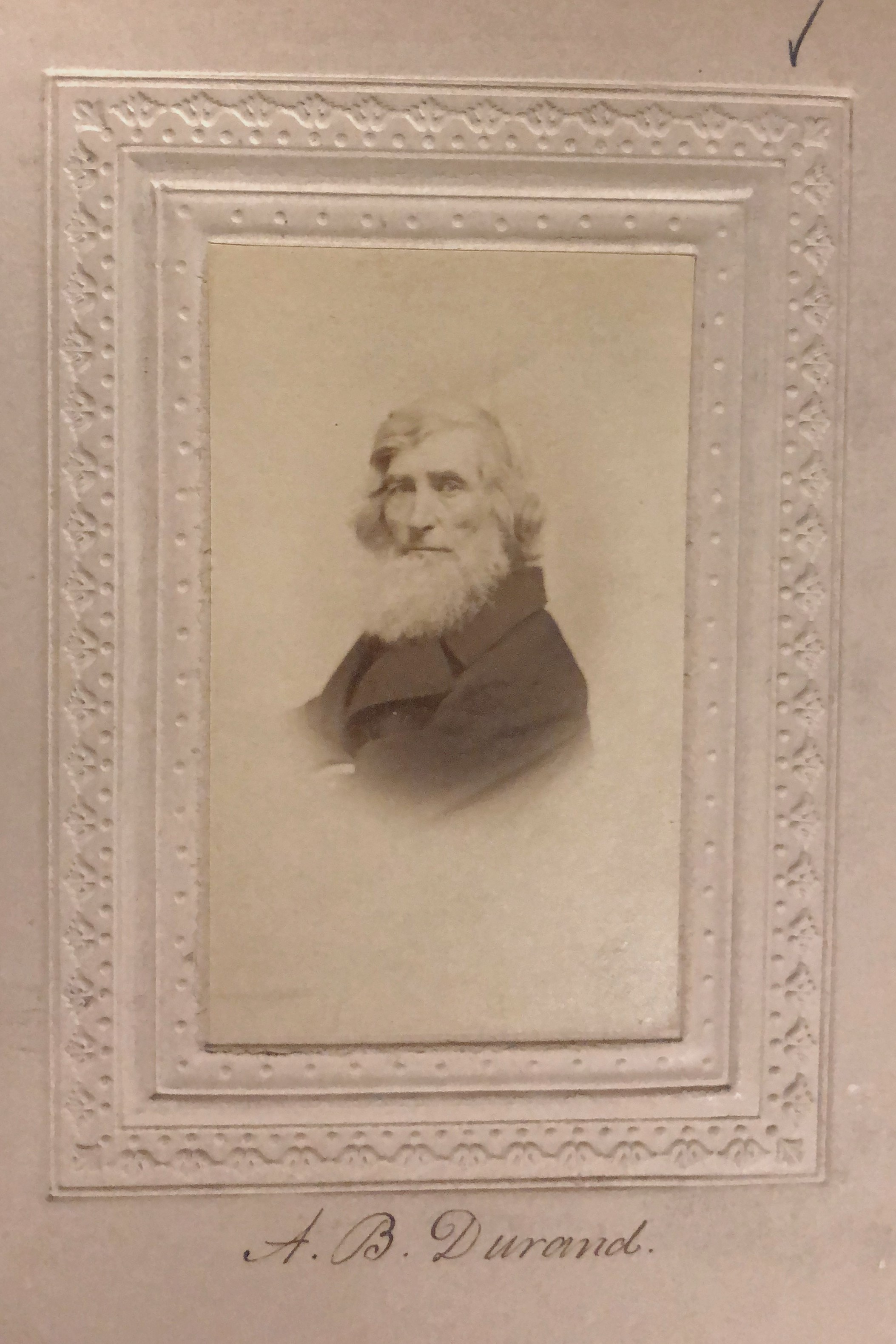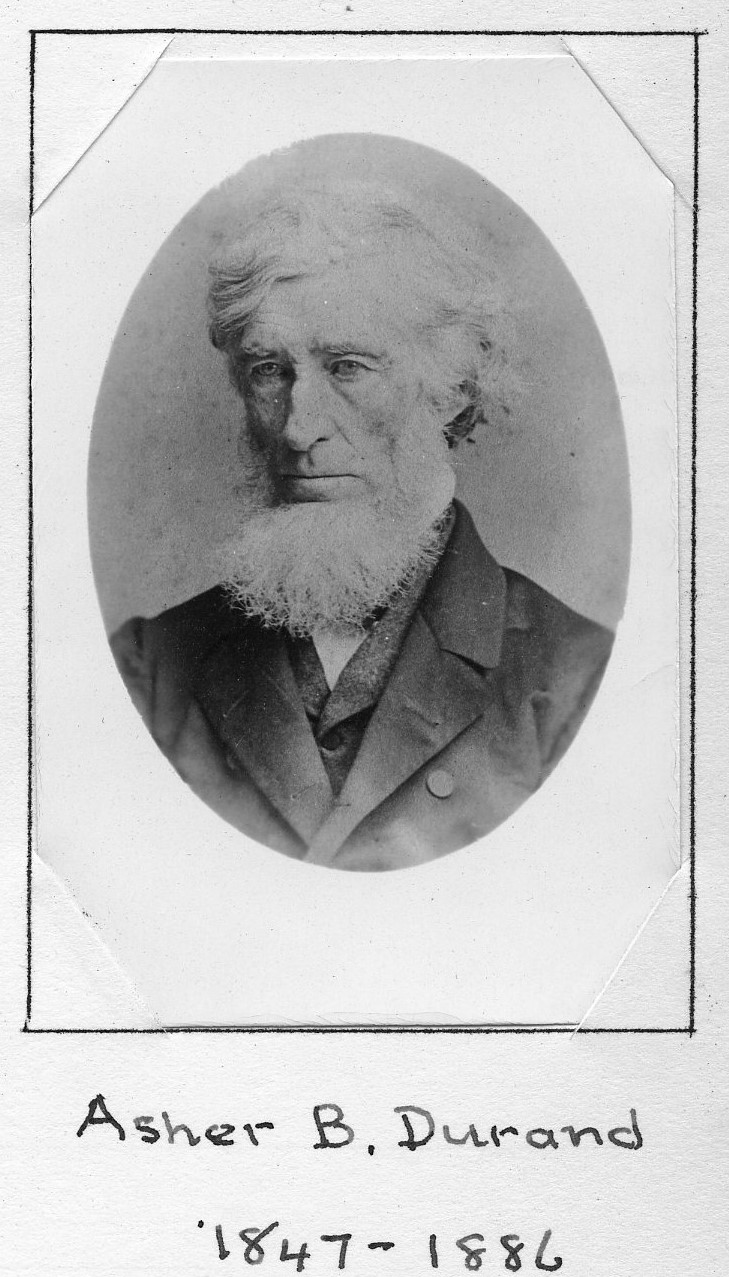Artist/Engraver
Centurion, 1847–1886
Born 21 August 1796 in Maplewood, New Jersey
Died 17 September 1886 in Maplewood, New Jersey
Buried Green-Wood Cemetery , Brooklyn, New York
, Brooklyn, New York
Proposed by N/A: Founder
Elected 13 January 1847 at age fifty
Archivist’s Note: Father of John Durand.
Seconder of:
Century Memorials
Asher B. Durand was one of the founders of the Century, and but three survive him. Born in 1796, whilst Washington was still President, and dying during the administration of Cleveland, it was permitted him to witness the wonderful material and intellectual development of the Nation, and by his own ability and life-work to contribute essentially to the wonderful advance of our people in knowledge of all that pertains to the theory and practice of the fine arts.
We respect the man of unblemished character, as we admire the versatile artist; but we honor the citizen, who was both a founder of the National Academy of Design, and of the Century Association.
Horace W. Robbins
1887 Century Association Reports
Asher B. Durand—engraver, illustrator of Cooper’s and Irving’s tales, and the father of the Hudson River School of painters—was sixty in 1857. The son of a watch-maker and silversmith of Huguenot ancestry, he became the apprentice of Peter Maverick, engraver. His reputation was made as a young man by his engraving of John Trumbull’s “The Declaration of Independence.” He succeeded Samuel F. B. Morse, first president of the National Academy of Design, and served long in that office.
The painter, Daniel Huntington, fourth president of the Century, writing of Durand, dwelt upon his “subtle and infinitely varying effects of atmosphere, of fleeting clouds, mists, sunshine, twilight obscurity, and the thousand wondrous phenomena which form the peculiar glory of landscape.”
In our card room is Durand’s large canvas “Catskill [Kaaterskill] Clove,” and on the fourth floor his “Bash Bish Falls.” Our dining-room is adorned by Durand’s portraits of his friend Bryant, President John Quincy Adams, and President Madison. (Luman Reed commissioned Durand to paint Adams and Madison. The Century portraits, one or both possibly replicas, were purchased by the Century from the artist in 1870 for three hundred dollars.) A three-quarters’ length portrait of Durand by Huntington hangs in our East Room.
Literature Committee
“Incorporators of the Century, 1857” (1936 pamphlet)
Durand, one of the founders of the Century Club, was born in and eventually died in Maplewood, New Jersey. He lived in what is now known as the Durand-Hedden House, now designated as a historic landmark.
Durand was apprenticed to an engraver from 1812 to 1817, later entering into a partnership with the owner of the firm. He engraved the Declaration of Independence for John Trumbull in 1823, which established Durand’s reputation as one of the country’s finest engravers. Durand helped organize the New York Drawing Association in 1825, which later became the National Academy of Design; he would serve the organization as president from 1845 to 1861.
His interest shifted from engraving to oil painting around 1830. In 1837, he accompanied his friend Thomas Cole on a sketching expedition to Schroon Lake in the Adirondacks and soon after he began to concentrate on landscape painting. He spent summers in the mountains of the Northeast, making hundreds of drawings and oil sketches that were later incorporated into finished pieces, which helped to define the Hudson River School.
Durand is particularly remembered for his detailed portrayals of trees, rocks, and foliage. In 1855, his influential Letters on Landscape Painting were published in the Crayon, an important art periodical founded by the artist’s son, John Durand.
Durand is noted for his 1849 painting Kindred Spirits, which shows Thomas Cole and poet William Cullen Bryant in a Catskills landscape. This was painted as a tribute to Cole upon his death in 1848. The painting, donated by Bryant’s daughter Julia to the New York Public Library in 1904, was sold in May 2005 to Alice Walton for a purported $35 million.
In 2007, the Brooklyn Museum exhibited nearly 60 of Durand’s works, the first exhibition devoted to him in more than 35 years. The Century, which owns five Durand paintings and a drawing, contributed Kaaterskill Clove to the show.
James Charlton
“Centurions on Stamps,” Part I (Exhibition, 2010)



